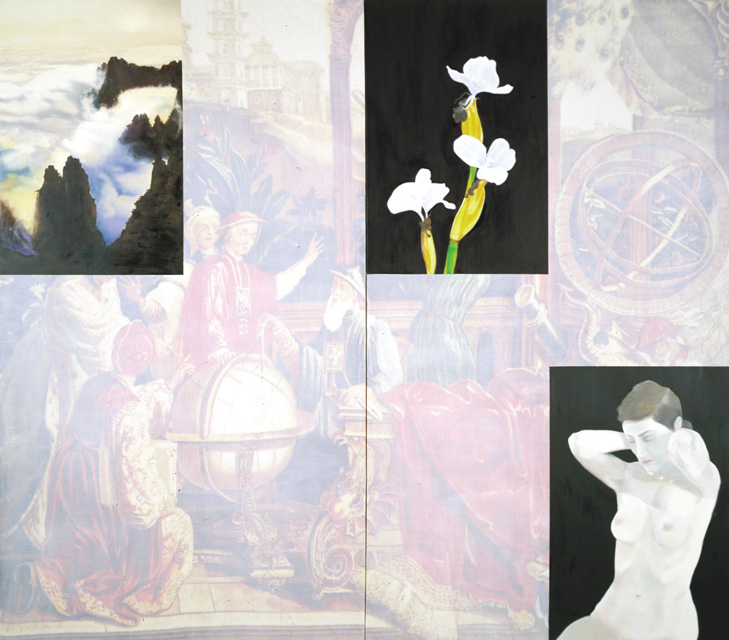


John Young's art has been informed by a succession of theoretical frameworks: conceptual art, deconstruction, post-modernism and postcolonialism. As an art student, he was involved in affronting project such as the Sydney College of Arts magazine Z/X and a punk band called the Slugfuckers. Yet he is also the creator of some of the most elegant contemporary art in Australia. Some scholars have identified this chameleon-like behaviour as 'hyper-conformism'. Because Young's art fits into various discourses so convincingly, he is able to be critical of them from within, in clever and subtle ways.
A former philosophy student and art theorist, Young has been a critical participator in several major discourses in contemporary art since the early 1980s. His work consistently plays different concepts and forms of knowledge off each other. For example, Young will pit scientific thought against mysticism, or bureaucracy against anarchism. The result is a very elegant representation of a presentation of ideas and images that are provocatively related to each other.
lOn iberty #1 (1993) is an example of Young's work at an important turning point. Young had just left Minimalism and moved into postcolonialism. This transition he cleverly achieved by replacing his dominant motif—the coloured, Minimalist grid—with a digitally scanned and mechanically painted image overlayed with hand-painted vignettes from various genres of European painting. Works with this composition are known as Young's 'Double ground' paintings. This composition is like a conflation of foreground and background. In effect, the paintings have two grounds, two levels that co-exist and interact with each other. The basic grid formation is retained but the paintings are opened up to new dimensions both visually and semantically. The Double ground introduced narrative, genre and 3D perspective to Young’s work. It also facilitated his ability to participate in postcolonialist discourses and fully utilise his own Chinese background as a rich visual and intellectual resource.
The scanned ground of On liberty #1 is a reproduction of a seventeenth-century Italian tapestry which illustrates the moment when the Jesuit, Matteo Ricci, introduced the Chinese Celestial Emperor to the Copernican system of astronomy in the 1600s. This subject positions On liberty #1 as being concerned with postcolonial issues such as the exchange of knowledge and power between eastern and western nations. Further, the Copernican system eventually resulted in western humanist perspectivism, so this work implicates visual conventions in the politics of colonialism.
The other ground comprises three painted images from three western genres: the nude, the still life and the landscape. While the scanned image contains a narrative, the painted images represent a mood more than a story. The nude is appropriated from a 1950s book of photographic studies by John Everard. Although Everard’s nudes had an educational purpose, they also have a hokey soft-porn ambience. In On liberty #1, they serve to drive the point that edification makes a great disguise for dubious causes, adding to the work’s critical position in relation to the Jesuit's exchange with the Emperor.
- Lara Travis
John Young is represented in Australia by ARC ONE Gallery, Melbourne.